#Digital Audio Compact Disc
Explore tagged Tumblr posts
Text
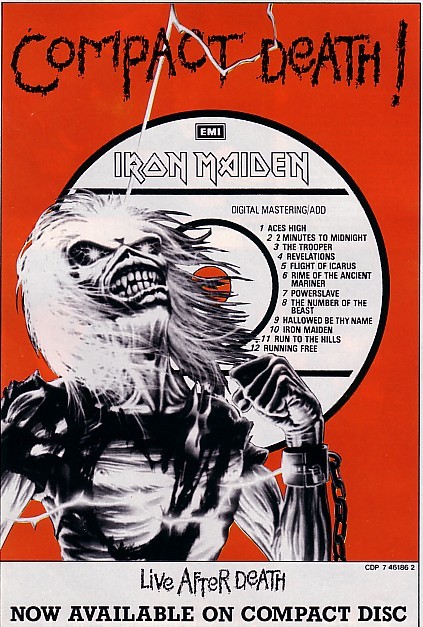
BREAKING THE CRUST IN '86 -- UP THE IRONS AND THE ADVENT OF THEN NEW AUDIO TECHNOLOGY.
PIC INFO: Spotlight on an EMI Records advert promoting the newly-pressed edition of IRON MAIDEN's "Live After Death" (originally released in 1985) on then new compact disc/CD format, c. 1986.
Of course, any 1986 CD pressings are worth a good chunk of change nearly four decades later, and I personally absolutely love retro CD adverts such as these as I'm an avid music CD collector myself, and have been ever since getting my CD collection started back in high school. No vinyl for me, thanks.
Source: www.flickr.com/photos/thinlizzyguide/3199611308.
#IRON MAIDEN#IRON MAIDEN band#80s#80s Metal#Digital Sound#Digital Audio#Lasers Not Needles#EMI#EMI Records#IRON MAIDEN Live After Death#UK Metal#Heavy Metal#Compact Disc#CD#CDs#Record Ads#Record Adverts#1985#1986#1980s#Live After Death 1985#Print Ads#Digital Audio Compact Disc#Compact Disc Digital Audio#Up the Irons!#Compact Death!#IRON MAIDEN 1985#Eddie Maiden#CD Technology#💿
9 notes
·
View notes
Text

In Good Company (2004, Paul Weitz)
19/08/2024
#In Good Company#2004#paul weitz#los angeles#new york city#soundtrack#Compact Disc Digital Audio#2005#david byrne#The Soundtrack of Our Lives#iron & wine#chain of fools#aretha franklin#stephen trask#bésame mucho#diana krall#steely dan#peter gabriel#united states#universal pictures#italy#BiM Distribuzione#United States dollar#roger ebert#the new york times#entertainment weekly#metacritic#Universal Pictures Home Entertainment#dvd
0 notes
Text

Interface Blues.
Released 22 April 2023
ALB-Walter Mouse Ivor Cutler-Beautiful Cosmos Gilroy Mere-Swallows Secret Circuit-Interface < Tony Rolando-Every Day was the Same So I Wigged Out Monochrome Echo-The Associator Andrew Wasylyk-Lower Dens Works Field Rotation-Acoustic Tale 4 (Ft. Danny Norbury) Domenique Dumont-Arrival Smackos-One Day We Will Trip Out From Star To Star Bobby Oroza-My Place, My Time California Storm-Lagoon SiP-Amitabul
#ALB#Ivor Cutler#Gilroy Mere#Secret Circuit#Tony Rolando#Monochrome Echo#Andrew Wasylyk#Field Rotation#Domenique Dumont#Smackos#Legowelt#Bobby Oroza#California Storm#SiP#Clay Pipe Music#Castles In Space#Tape Club Records#The Leaf Label#Big Crown Records#Neotantra#Compact Disc Digital Audio#Not Not Fun Records
1 note
·
View note
Text
I don't think I showed you guys my stereo setup yet? :3

It's been a work in progress for a while, but I finally got it all set up and I'm sooo pleased with how it looks and sounds.

The Pioneer six-tape changer is the heart of my setup - I actually specifically hunted down the other units to go with it. This was my dad's tape deck when I was a little kid, and was how I first heard the Grateful Dead and Yes and many other incredible artists. I put the cow sticker on there when I was four or five years old and it's been there ever since.

Full details of the equipment below:
1. Technics SB-T200 tower speakers (2003) (not pictured) which were a $6 auction score and didn't even need any repair work hell yeah. These are connected via banana plug and speaker wire to:
2. Pioneer SX-2600 Stereo Receiver (1989), which in turn takes audio input from:
3. Pioneer PD-201 Compact Disc player (1992)
4. Pioneer CT-M6R Multi-Cassette Changer (1989), which again takes SIX tapes and is sooooo special to me
5. Audio-Technica AT-LP60XBT belt drive turntable
6. And finally, 3.5mm aux cable so I'm ready for anything
7. It's all connected to a Pioneer DT-560 audio digital timer (1985), mostly for easy power management and to have a clock in the room
Setup took a couple hours, but a big part of that was that I kept changing my mind about which components to put where, haha. This was sooo much fun to put together overall!
All of my fellow music enjoyers should ABSOLUTELY put together a "grown-up" stereo system like this. It was way easier (and more affordable) than I would have expected. Your turn now. gogogo!!
(bonus pic from this morning since you read this far thanks I love you)

#cassette culture#aesthetic#synthwave#1980s#1990s#cassettes#audio equipment#tape deck#interiors#music
37 notes
·
View notes
Text
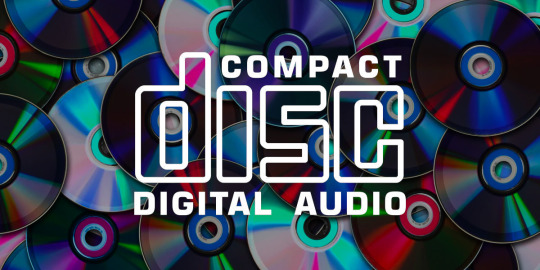
A few people took exception to calling my car's CD player useless.
I actually think it is great there are a few holdouts still using CDs.
CDs are truly one of the most perfect media ever created.
And I can prove that mathematically.
Some will say vinyl is superior. And as much as I love records, the audio quality is preferred, not better. People have a *preference* for how vinyl sounds, but it still leaves out audio information and has noise and artifacts caused by the mechanics of the turntable and an imperfect manufacturing process.
In fact, the lesser audio quality is exactly what people enjoy. It has a warmth and comfortably compressed dynamic range that is not fatiguing over long listening sessions. It's like choosing a nice fire over a 100% efficient space heater.
But if you want perfect audio quality that does not exceed the limits of human hearing, compact discs are where it's at.
It all has to do with Dr. Harry Nyquist and his Nyquist-Shannon Theorem. (Sometimes Shannon gets left out and it is just called the Nyquist Theorem.)
The simple version is he figured out how much something needs to be sampled in order to not lose any information. As long as you sample something at a frequency greater than or equal to twice per cycle, you will have a lossless... whatever.
In this case, a lossless audio recording.
So the range of human hearing is about 20 Hz to 20 kHz. That's the lowest and highest frequencies we can perceive. The scientists creating CD audio figured they'd do 22 kHz for some overhead and then you double that to get 44 kHz. (Technically it was 44.1 kHz.)
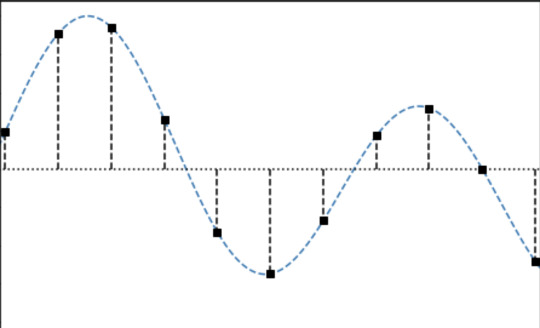
You can imagine the smooth curvy line as an analog recording. No gaps. No information loss.
The black squares are digital samples recorded over a period of time. You can see there are gaps between those black squares. A tiny bit of time passes between the squares where nothing is sampled. INFORMATION LOSS! NOOOOO!
Clearly the vinyl nerds are correct and digital is inferior, right? You are going to get the dreaded... STAIR STEPS!
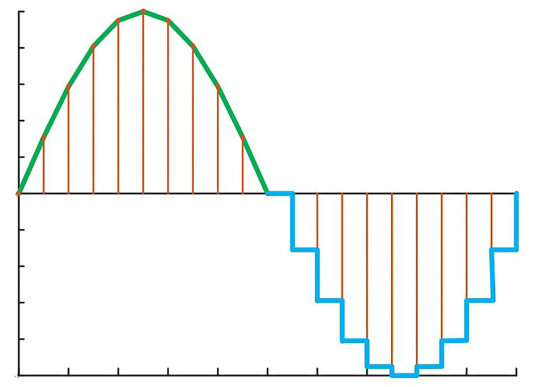
Not so fast, bucko!
By getting enough samples over a period of time, you can use math to infer that smooth sloping line connecting those individual samples. So the digital recording also has no information lost once it is converted back to analog and played through your speakers.
This connecting of dots is called "interpolation."
You could take the curvy analog, convert it to digital, get the same black squares, and then interpolate the black squares back into analog and get the same curvy line. It goes back and forth perfectly. And this is all verifiable with an oscilloscope.
NEAT!
Then of course you need a good dynamic range--the spectrum of quiet to loud. Anything above 85 decibels will damage your hearing, so they went with a 16-bit depth which covers roughly 100 dB. Again, giving them a little overhead for death metal and overzealous trumpet players.
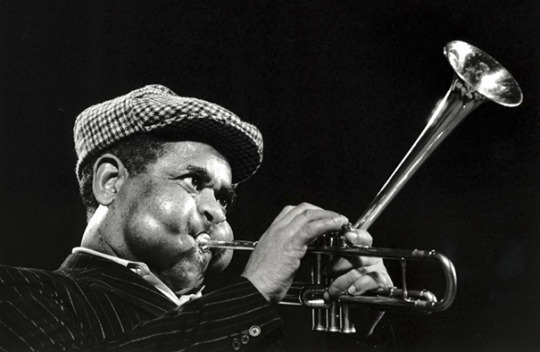
And the final component is data bandwidth or "bitrate" usually measured in kilobits per second. This is how much data is read every second. The 1s and 0s of it all. The bitrate of a CD is calculated by multiplying 44,100 samples per second per channel by 16 bits per sample and then multiplying by 2 channels. After all that mathing is math'd, you get a perfectly uncompressed 1,411 kbps.
So you've got all the frequencies you could ever hear combined with as much volume as your ears can stand with a bit rate that will give you no loss of data.
The *perfect* audio quality all encoded into little microscopic pits.
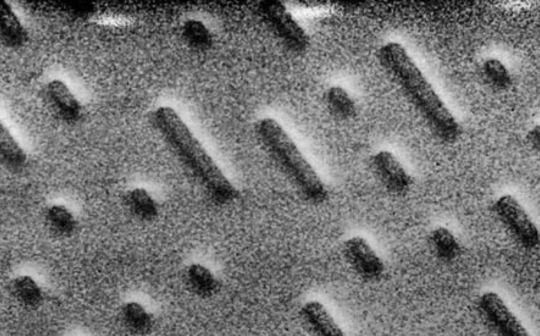
Now you may be asking, "Why do I see "24/96" or "24/192" advertised on fancy audio equipment and high quality streaming platforms like Tidal? Aren't 24 bits better? Isn't 96 kHz MORE than 44.1 kHz?"

Dr. Nyquist might say... this is some bullshit.
This confusion comes from the fact that recording quality and playback quality are two different animals. This misunderstanding happens with video and photo quality as well. Recording in 6K will give you a sharper picture even if your final playback quality is 4K. You can get bad pixels and noise and stray photons that do not contribute to the detail in the video. By giving yourself overhead you can ensure you hit the desired quality target.
And recording at 24 bits and 96 or 192 kHz, you get a higher resolution to edit and master with, but it is only advantageous to the computer software... not the human ear.
From a photographer's perspective, I relate to it like this...
If I have more megapixels and more colors and more dynamic range I have more leeway when editing my photos. If you try to push a low quality photo in the edit, it has this tendency to fall apart. You can get ugly color banding and harsh contrast and sharpening artifacts. By capturing more quality than you need in the finished product, you can process the photo much more dramatically before it deteriorates and loses integrity.
Audio and video are the same way.
So let's say you have a metal singer that screams at the microphone as loud as possible from 2 inches away.

At 16 bits they may surpass that 100 decibel dynamic range and distort the recording. But if you record in 24 bits, you get 144 dB to play with. Or you can even do 32 bits and get 1500 dB--a volume that no human voice could ever surpass. It guarantees a clean, distortion free recording, but 32 bits would be pointless for human listening.
The same is true with the sample rate. Having a higher resolution allows you to zoom into waveforms and adjust things to an extremely granular level. You can do precise timings, tiny pitch adjustments, apply loads of digital effects, and just have more room for audio activities without degrading the sound quality.
But outputting 192,000 of those black squares is going to interpolate the exact same smooth curvy line as 44,100 when it is played through speakers.
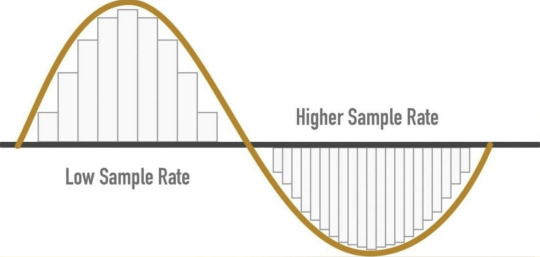
The oscilloscope knows what I'm talking about.
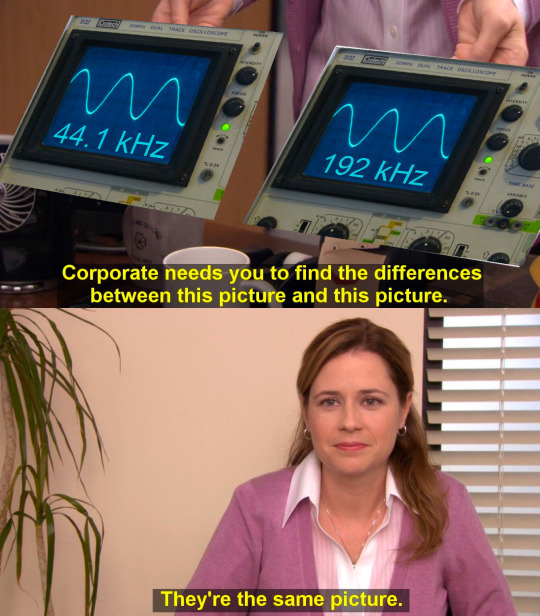
Now I am about to reveal a secret that no audiophile who has invested in a $115,000 high resolution 32 bit/3,072 kHz DAC wants to acknowledge...
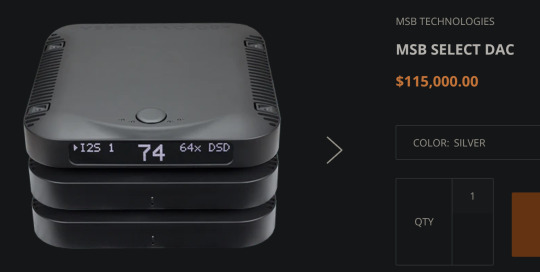
The master recording is always more important than the playback quality.
If you have a high quality source it will sound great even in a highly compressed MP3. Just like the 6K video is sharper on the 4K TV. And the high megapixel photo looks better in an Instagram post.
If the source is good, the media will be good.
And since high resolution audio services often seek out the best masters available before encoding their playback files, it gives many people the illusion they are getting better sound quality due to the boosted specs.
When in reality, it was just a better copy of the original recording.
According to Nyquist, your human ears are not computers and all you need is double the frequency to hear perfect sound with no loss of information. So anything above 16 bit/44.1 kHz/1411 kbps and you are just wasting bandwidth on a server.
And I don't want to hear anything about "stair stepping."
IT'S MATH.
Your ears aren't better than math, okay?
If you don't believe in math, then you and Jack White can sit in the naughty math corner with his bespoke overpriced vinyl pressings.

I will say, there is a gap between your standard music streaming service like Spotify and your bullshit audiophile service like Tidal.
Free Spotify uses heavily compressed files. Which means the bitrate is quite low and there can be information loss. Or "lossy" compression. Modern compression is actually pretty amazing, but I'm afraid anything below 320 kbps may cause some songs to not sound as intended.
Depending on the content, some songs are more suited to compression than others. And even with premium Spotify, they cap songs at 320 kbps which still may not be enough for busier, harder-to-compress songs.
Also, I don't know if Spotify cares about getting the best quality master for a given song. Which, again, is the most important aspect of sound quality.
But services like Tidal waste bandwidth with their super specs and that isn't great for the environment. What I'd love to see is a company that makes their best effort to seek out high quality masters, and encodes their files at 16 bit/44 kHz with a lossless variable bit rate compression. Variable bit rate or "VBR" will do more compression during simpler parts of the audio and less compression during more complex parts. It's smart compression, basically. And as long as you use a high enough bitrate to achieve lossless compression, the sound quality will be the same as if there is no compression at all. So you still get smaller file sizes that use less bandwidth and have a smaller environmental impact.
That would be a streaming service I would consider paying for. Especially if they put great effort into getting high quality original recordings for their content.
In conclusion... if you are still using CDs you don't need to worry about audio quality. You're all set. There is a sort of beauty in what the audio scientists who created compact discs did. They figured out the limits of human audio perception and created a format that just slightly exceeded that. No "bigger number is better" marketing. No audiophile bullshit.
They said, "Here is what you need and nothing more."
They made a perfect thing and they should be proud of that.
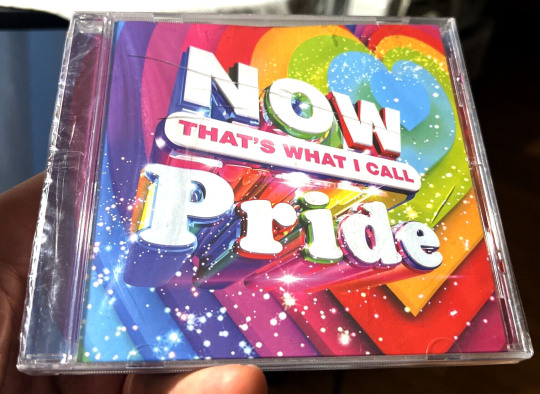
435 notes
·
View notes
Text
From Nostalgia to Necessity: The Comeback of Compact Disc Players

What was once considered outdated is making a comeback: compact disc players are re-entering the audio market with a modern twist. As vinyl’s popularity continues to surge, CDs are also regaining their footing among collectors and casual listeners alike. This article explores the reasons behind the resurgence, what makes the best compact disc players, and why they’re worth your investment.
The CD Revival: What’s Driving the Trend?
A Generation Rediscovering Physical Media
Millennials and Gen Z are fueling a revival in physical formats. Compact discs provide a middle ground between analog nostalgia and digital precision. Unlike streaming, CDs offer true ownership and an engaging tactile experience.
A Reliable Format in an Unstable Digital World
Subscription cancellations, music library changes, and internet outages can strip you of your digital collection overnight. With compact disc players, your music is always accessible and under your control.
How to Spot the Best Compact Disc Players
Enhanced Playback Features
The best compact disc players boast features like anti-skip protection, multi-format playback, and advanced error correction systems. These functions ensure seamless listening even with older or lightly scratched discs.
Ergonomic and Aesthetic Design
Modern CD players blend retro charm with futuristic design. Look for intuitive control layouts, clear LCD displays, and stylish finishes that complement your home décor.
Integrated and Portable Options
Need flexibility? Consider portable compact disc players with rechargeable batteries and headphone jacks for on-the-go listening, or integrated models that double as all-in-one stereo systems.
Our Favorite Compact Disc Players for Everyday Use
Sony ZSRS60BT – A compact boombox-style player with Bluetooth functionality.
Onkyo C-7030 – Known for its robust design and warm sound signature.
Panasonic RX-D55GC-K – A versatile model with USB and radio playback capabilities.
Conclusion
The return of compact disc players is more than just a trend—it’s a celebration of quality and authenticity in music. Whether you're revisiting a classic collection or building a new one, investing in the best compact disc players ensures a listening experience that’s both reliable and emotionally rewarding. Sometimes, the best way forward is a step back to proven excellence.
1 note
·
View note
Text


AT THE FOREFRONT OF THE DIGITAL AUDIO REVOLUTION -- ENTER THE SONY COMPACT DISC DIGITAL AUDIO PLAYER.
PIC(S) INFO: Mega spotlight on print adverts for the Sony CDP-101, otherwise known as the world's first commercially released compact disc player. The system was launched in Japan on October 1, 1982 at a list price of 168,000 yen (approx US$730).
MINI-OVERVIEW: "Even the longest journey has to begin with the first step. For Sony, one of these steps was to release the CDP-101 player, which launched the adventures of the Compact Disc format. So this is genesis -- the first audiophile CD player. The device was released in 1982 and followed by the first compact album -- reissued "52nd Street" by BILLY JOEL. Sony was ahead of their partner in creating the CD format because Philips unveiled its first player a month later (it was the CD-100). This player was based on a CX-20017 16-bit D/A converter made by Sony (like most of the electronics used for the construction of this machine) and the KSS-100A laser module. These days the CDP-101 was one of the most advanced devices for general commercial use with 34 chips onboard."
-- "STEREOLIFE" Magazine, by Jarosław Święcicki, posted February 16, 2021
Sources: www.amcleansound.com/blog/back-to-the-digital-future-an-am-love-letter-to-the-compact-disc, www.stereolifemagazine.com/articles/item/1481-sony-cdp-101, various, etc...
#Sony 1982#Compact Disc#Digital Sound#Advertisements#Vintage Ads#Vintage Style#Adverts#Sony Advertisements#Sony#SONY#Sony CDP-101 Compact Disc Digital Audio Player#Retro Ads#80s Japan#80s Audio Technology#80s Audio#Audio Technology#CD Technology#Compact Disc Digital Audio Player#Print Ads#Sony Compact Disc Digital Audio Player#1980s#Japanese Style#80s#CDs#SONY 1982#CD
4 notes
·
View notes
Text
this is what sony and other audio companies want you to believe, but upon closer inspection of a cd, you will find it isn’t really all that compact. 650MB on a 4.7” disc is kind of laughable — they really should’ve tried harder. crazy that nobody has done anything to improve upon portable digital media beyond usb/microSD solid state tech. like idk u could totally make like a little usb gadget that u plug into your car and it like, does something. idk what. i mean everyone just uses spotify anyways so who would really care. whatever. who cares. usb for ur car that has soulseek client onboard and can connect to wifi. idk. we need something as stylish as cassettes. i just think cassettes are cool. i wish i could get a modern car with a cassette player i would cassette the hell outta that bitch. fuck yeah. and now you can’t even get a “cd” player in one. like, fuck’s up with that? ok u added bluetooth good job yayyyyyy yayyy everyone say it yayyyy congratulations oh have bluetooth and apple car play and apple tv and chess you can play chess on your ddrive to work while you’re calling a coworker and watching family guy funny moments yayyyyy ayyyayyyyyy. yay. yayyy. . . give me back my fucking cd players and cassette players and headphone jack and aux input jacks and fucking how about the graphic equalizers huh. take the four band graphic eq out of the 1999 pontiac firebird trans am and deliver it directly into my face. might as well take the whole fucking stereo because guess WHAT THERE IS CASSETTE AND CD. BOTH. of them. with the coolest controls ever. fuck. let’s start shooting the fucking car designers next. nothing has any character anymore and it fucking sucks. all i want is the option to have a cd player in my car. is it really so much to ask. cds fuck. they’re laughably misnamed but they fuck. if a girl got me in her passenger seat and pulled out a cd binder i would rip her clothes off and fuck her sloppy right there (consensually). and what a world it would be. anyways happy cds to all and to all a good night.
its called a cd because it stands for compact disc
#analog media#digital media#cds#cassette#196#r/196#i fail to understand the 196 tag but i’m putting it here as an act of self love#i love you charlotte you are my favorite tumblrer#i don’t know why i wrote this#but it’s here now#enjoy
5K notes
·
View notes
Text
Price: [price_with_discount] (as of [price_update_date] - Details) [ad_1] Product Description CD-R 700MB Premium Recordable Compact Disc Slimcase 52x Speed About the item Best for Storage of Digital Documents, Video, Audio, Music, Movies, Photos, Multimedia Files-Content & SoftwareCompatible with all types of windows,Linux, Mac OS| CD/DVD/Bluray BDR Writer - Burner I Music System | Desktop |Laptop Colour Silver Memory Storage Capacity 700 MB Format CD-ROM Item Weight 50 Grams The HP DVD-R 4.7GB Recordable Blank Digital Versatile Disc is a reliable and high-quality solution for storing data, photos, videos, and software installation files. The pack contains 50 DVDs, each with a capacity of 4.7GB or 120 minutes of video recording. These DVDs offer a maximum write speed of 16x, allowing for fast and efficient data transfer and backup. The DVD-R format is compatible with most DVD writers and players, ensuring that your data is easily accessible and can be read by a wide range of devices. Each disc comes in a shrink wrap packaging that provides protection during shipping and storage, ensuring that your data remains safe and secure. The high-quality recording layer ensures long-term data retention, and the write-once format prevents accidental overwriting or erasing of data. These DVDs are designed for reliable performance and compatibility with most DVD players and drives, making them suitable for both personal and professional use. Best for Storage of Digital Documents, Video, Audio, Music, Movies, Photos, Multimedia Files-Content & Software [ad_2]
0 notes
Text
Blu-ray Discs Market Set to Hit $2.0 Billion by 2035
The Blu-ray Discs market is anticipated to grow significantly, with projections indicating a rise from $1.2 billion in 2024 to $2.0 billion by 2035. This growth is largely driven by increasing demand across key applications such as home entertainment, data storage, gaming, and film production. The surge in demand for high-definition content and advanced digital data storage solutions is fueling this expansion, making Blu-ray Discs an attractive option for consumers and businesses alike.
Blu-ray Discs in Home Entertainment
Blu-ray Discs are widely used in home entertainment systems, providing high-definition audio and video content. These discs offer superior resolution and significantly larger storage capacity compared to traditional DVDs, allowing for an enhanced, uninterrupted viewing experience. Key industry players such as Samsung and Sony are leading the way with cutting-edge technology, ensuring their Blu-ray discs deliver exceptional quality and performance.
Access detailed report insights here - https://datastringconsulting.com/industry-analysis/blu-ray-discs-market-research-report
Blu-ray Discs for Digital Data Storage
Blu-ray Discs are also increasingly being used for digital data storage, especially due to their ability to hold large amounts of data in a compact format. Dual-Layer Blu-ray Discs, with their impressive 50GB storage capacity, have become a popular choice for businesses and individuals needing reliable data backup solutions. Companies like Verbatim and Panasonic are at the forefront of this sector, offering products that guarantee data integrity and reliable performance for long-term storage needs.
The Rise of 4K and HDR Formats
With the advent of higher resolution formats, Blu-ray Discs have become the ideal medium for delivering high-quality 4K content. This shift not only impacts the home entertainment industry but also drives innovations in related sectors like television manufacturing and film production. The growing popularity of technologies such as High Dynamic Range (HDR) and Dolby Vision is further enhancing the Blu-ray experience, providing even better visual and audio quality. This evolution gives Blu-ray Discs a competitive edge, offering consumers a premium viewing experience with superior sound and display quality.
Industry Leadership and Strategies
The Blu-ray Discs market is highly competitive, particularly in demand hubs like the U.S., Japan, and Germany. Leading companies such as Sony, Samsung, LG, Panasonic, Philips, and others have adopted various strategies to maintain their market positions:
Sony Corporation focuses on delivering an immersive home theater experience by leveraging the high-definition video quality of Blu-ray discs.
Verbatim Americas, LLC emphasizes the large storage capacities of Blu-ray discs, catering to businesses' data backup needs.
Microsoft Corporation enhances gaming experiences by integrating Blu-ray disc technology into gaming consoles, offering superior graphics and audio performance.
Warner Bros. Entertainment Inc. utilizes Blu-ray discs for film distribution, highlighting the superior video and audio quality they offer.
Projected Market Growth (2025-2030)
The Blu-ray Discs market is expected to see significant growth between 2025 and 2030. Key market drivers include the rising demand for high-definition content, technological advancements in storage systems, and the ongoing shift towards 4K and HDR formats. These trends are expected to continue shaping the market, with Blu-ray Discs maintaining a competitive edge as a premium storage and entertainment solution.
Regional Analysis and Growth Drivers
In North America, Blu-ray Discs have experienced strong market penetration due to a high number of early tech adopters and a well-established entertainment industry. The region is also home to major industry players like Sony and Panasonic, creating a competitive landscape. Technological advancements in digital media and the increasing popularity of high-quality visual content are key growth drivers in the region. The robust home theater culture and demand for immersive entertainment experiences are expected to further propel the growth of Blu-ray Discs in North America.
Market Research Insights
DataString Consulting provides comprehensive insights into the global Blu-ray Discs market, analyzing key trends and opportunities across various storage capacities (single-layer, dual-layer, XL versions), applications (movies, music, gaming, software/data storage), and disc types (BD-ROM, BD-R, BD-RE). This detailed analysis helps businesses identify emerging opportunities and stay ahead of competitors in a rapidly evolving market.
About DataString Consulting
DataString Consulting specializes in helping businesses develop strategies for market expansion, revenue diversification, and entry into new markets. Through in-depth industry insights, competitor analysis, and customer demographics, DataString Consulting aids companies in identifying and capitalizing on new opportunities. With over 30 years of combined experience in market research and strategy advisory, DataString’s team tracks high-growth segments across more than 15 industries and 60 sub-industries, providing clients with valuable intelligence in an ever-changing market.
0 notes
Text

On March 8, 1979, Philips unveiled the optical digital audio disc, otherwise known as a compact disc.
0 notes
Text
Mastering



Mastering, a form of audio post production, is the process of preparing and transferring recorded audio from a source containing the final mix to a data storage device (the master), the source from which all copies will be produced (via methods such as pressing, duplication or replication). In recent years, digital masters have become usual, although analog masters—such as audio tapes—are still being used by the manufacturing industry, particularly by a few engineers who specialize in analog mastering.
Mastering requires critical listening; however, software tools exist to facilitate the process. Results depend upon the intent of the engineer, their skills, the accuracy of the speaker monitors, and the listening environment. Mastering engineers often apply equalization and dynamic range compression in order to optimize sound translation on all playback systems. It is standard practice to make a copy of a master recording—known as a safety copy—in case the master is lost, damaged or stolen.
History
Pre-1940s
In the earliest days of the recording industry, all phases of the recording and mastering process were entirely achieved by mechanical processes. Performers sang or played into a large acoustic horn and the master recording was created by the direct transfer of acoustic energy from the diaphragm of the recording horn to the mastering lathe, typically located in an adjoining room. The cutting head, driven by the energy transferred from the horn, inscribed a modulated groove into the surface of a rotating cylinder or disc. These masters were usually made from either a soft metal alloy or from wax; this gave rise to the colloquial term waxing, referring to the cutting of a record.
After the introduction of the microphone and electronic amplifier in the mid-1920s, the mastering process became electro-mechanical, and electrically driven mastering lathes came into use for cutting master discs (the cylinder format by then having been superseded). Until the introduction of tape recording, master recordings were almost always cut direct-to-disc. Only a small minority of recordings were mastered using previously recorded material sourced from other discs.
Emergence of magnetic tape
In the late 1940s, the recording industry was revolutionized by the introduction of magnetic tape. Magnetic tape was invented for recording sound by Fritz Pfleumer in 1928 in Germany, based on the invention of magnetic wire recording by Valdemar Poulsen in 1898. Not until the end of World War II could the technology be found outside Europe. The introduction of magnetic tape recording enabled master discs to be cut separately in time and space from the actual recording process.
Although tape and other technical advances dramatically improved the audio quality of commercial recordings in the post-war years, the basic constraints of the electro-mechanical mastering process remained, and the inherent physical limitations of the main commercial recording media—the 78 rpm disc and later the 7-inch 45 rpm single and 33-1/3 rpm LP record—meant that the audio quality, dynamic range,[a] and running time[b] of master discs were still limited compared to later media such as the compact disc.
Electro-mechanical mastering process
From the 1950s until the advent of digital recording in the late 1970s, the mastering process typically went through several stages. Once the studio recording on multi-track tape was complete, a final mix was prepared and dubbed down to the master tape, usually either a single-track mono or two-track stereo tape. Prior to the cutting of the master disc, the master tape was often subjected to further electronic treatment by a specialist mastering engineer.
After the advent of tape it was found that, especially for pop recordings, master recordings could be made so that the resulting record would sound better. This was done by making fine adjustments to the amplitude of sound at different frequency bands (equalization) prior to the cutting of the master disc.
In large recording companies such as EMI, the mastering process was usually controlled by specialist staff technicians who were conservative in their work practices. These big companies were often reluctant to make changes to their recording and production processes. For example, EMI was very slow in taking up innovations in multi-track recording[c] and did not install 8-track recorders in their Abbey Road Studios until the late 1960s, more than a decade after the first commercial 8-track recorders were installed by American independent studios.
Digital technology
Optimum Digital Levels with respect to the Full Digital Scale (dBFSD)
In the 1990s, electro-mechanical processes were largely superseded by digital technology, with digital recordings stored on hard disk drives or digital tape and mastered to CD. The digital audio workstation (DAW) became common in many mastering facilities, allowing the off-line manipulation of recorded audio via a graphical user interface (GUI). Although many digital processing tools are common during mastering, it is also very common to use analog media and processing equipment for the mastering stage. Just as in other areas of audio, the benefits and drawbacks of digital technology compared to analog technology are still a matter for debate. However, in the field of audio mastering, the debate is usually over the use of digital versus analog signal processing rather than the use of digital technology for storage of audio.
Digital systems have higher performance and allow mixing to be performed at lower maximum levels. When mixing to 24-bits with peaks between −3 and −10 dBFS on a mix, the mastering engineer has enough headroom to process and produce a final master. Mastering engineers recommend leaving enough headroom on the mix to avoid distortion. The reduction of dynamics by the mix or mastering engineer has resulted in a loudness war in commercial recordings.
Process
[edit]A common mastering processor for dynamic range compression
The source material, ideally at the original resolution, is processed using equalization, compression, limiting and other processes. Additional operations, such as editing, specifying the gaps between tracks, adjusting level, fading in and out, noise reduction and other signal restoration and enhancement processes can also be applied as part of the mastering stage.[8] The source material is put in the proper order, commonly referred to as assembly (or 'track') sequencing. These operations prepare the music for either digital or analog, e.g. vinyl, replication.
If the material is destined for vinyl release, additional processing, such as dynamic range reduction or frequency-dependent stereo–to–mono fold-down and equalization may be applied to compensate for the limitations of that medium. For compact disc release, start of track, end of track, and indexes are defined for playback navigation along with International Standard Recording Code (ISRC) and other information necessary to replicate a CD. Vinyl LP and cassettes have their own pre-duplication requirements for a finished master. Subsequently, it is rendered either to a physical medium, such as a CD-R or DVD-R, or to computer files, such as a Disc Description Protocol (DDP) file set or an ISO image. Regardless of what delivery method is chosen, the replicator factory will transfer the audio to a glass master that will generate metal stampers for replication.
The process of audio mastering varies depending on the specific needs of the audio to be processed. Mastering engineers need to examine the types of input media, the expectations of the source producer or recipient, the limitations of the end medium and process the subject accordingly. General rules of thumb can rarely be applied.
Steps of the process typically include the following:
Transferring the recorded audio tracks into the Digital Audio Workstation (DAW)
Sequence the separate songs or tracks as they will appear on the final release
Adjust the length of the silence between songs
Process or sweeten audio to maximize the sound quality for the intended medium (e.g. applying specific EQ for vinyl)
Transfer the audio to the final master format (CD-ROM, half-inch reel tape, PCM 1630 U-matic tape, etc.)
Examples of possible actions taken during mastering:[8]
Editing minor flaws
Applying noise reduction to eliminate clicks, dropouts, hum and hiss
Adjusting stereo width
Equalize audio across tracks for the purpose of optimized frequency distribution
Adjust volume
Dynamic range compression or expansion
Peak limit
Inserting ISRC codes and CD text
Arranging tracks in their final sequential order
Fading out the ending of each song
Dither
Engineer
This section has multiple issues. Please help improve it or discuss these issues on the talk page. (Learn how and when to remove these messages)
This section needs additional citations for verification. (October 2008)
This section possibly contains original research. (February 2022)Mastering engineer Doug Sax with four disc cutting lathes
A mastering engineer is a person skilled in the practice of taking audio (typically musical content) that has been previously mixed in either the analogue or digital domain as mono, stereo, or multichannel formats and preparing it for use in distribution, whether by physical media such as a CD, vinyl record, or as some method of streaming audio.
Education and experience
The mastering engineer is responsible for a final edit of a product and preparation for manufacturing copies. Although there are no official requirements to work as an audio mastering engineer, practitioners often have comprehensive domain knowledge of audio engineering, and in many cases, may hold an audio or acoustic engineering degree. Most audio engineers master music or speech audio material. The best mastering engineers might possess arrangement and production skills, allowing them to troubleshoot mix issues and improve the final sound. Generally, good mastering skills are based on experience, resulting from many years of practice.
Equipment
Generally, mastering engineers use a combination of specialized audio-signal processors, low-distortion-high-bandwidth loudspeakers (and corresponding amplifiers with which to drive them), within a dedicated, acoustically-optimized playback environment. The equipment and processors used within the field of mastering are almost entirely dedicated to the purpose; engineered to a high standard, often possessing low signal-to-noise ratios [at nominal operating levels] and in many cases, the incorporation of parameter-recall, such as indented potentiometers, or in some more-sophisticated designs, via a digital-controller. Some advocates for digital software claim that plug-ins are capable of processing audio in a mastering context, though without the same degree of signal degradation as those introduced from processors within the analog domain. The quality of the results varies according to the algorithms used within these processors, which in some cases, can introduce distortions entirely exclusive to the digital domain.
Real-time analyzers, phase oscilloscopes, and also peak, RMS, VU and K meters are frequently used within the audio analysis stage of the process as a means of rendering a visual representation of the audio, or signal, being analyzed.
Aspects of their work
[edit]
Most mastering engineer accolades are given for their ability to make a mix consistent with respect to subjective factors based on the perception of listeners, regardless of their playback systems and the environment. This is a difficult task due to the varieties of systems now available and the effect it has on the apparent qualitative attributes of the recording. For instance, a recording that sounds great on one speaker/amplifier combination playing CD audio, may sound drastically different on a computer-based system playing back a low-bitrate MP3. Some engineers maintain that the main mastering engineer's task is to improve upon playback systems translations while the position of others is to make a sonic impact.
Prolonged periods of listening to improperly mastered recordings usually leads to hearing fatigue that ultimately takes the pleasure out of the listening experience.
0 notes
Text
Hyundai Venue N Line Features & More
For those seeking an SUV with sporty aesthetics and thrilling performance, the Hyundai Venue N Line stands out as an exciting option. This performance-oriented version of the Hyundai Venue N Line SUV boasts dynamic styling, advanced features, and a more engaging driving experience.
Whether you're an auto enthusiast or looking for a feature-rich compact SUV, the Venue N Line is designed to impress.

Powerful Performance & Sporty Engineering
The Hyundai Venue N Line SUV is powered by a 1.0L Turbo GDi petrol engine, producing 120 PS of power and 172 Nm of torque. Paired with a 7-speed DCT transmission, this SUV offers smooth gear shifts and quick acceleration.
Performance Highlights:
Sporty Exhaust Note – The twin-tip exhaust enhances the SUV’s sporty appeal.
Tuned Suspension & Steering – Provides better handling and control.
Disc Brakes on All Four Wheels – Ensures superior braking performance.
Multiple Drive Modes – Switch between Eco, Normal, and Sport modes for optimized driving dynamics.
Bold & Aggressive Design
The Hyundai Venue N Line carries a sporty and aggressive stance that sets it apart from the standard Venue. Hyundai has introduced N Line-specific enhancements that amplify its road presence.
Exterior Features:
N Line Exclusive Front Grille & Badging – Enhances the SUV’s sporty identity.
Red Accents on Bumpers & Side Skirts – Adds a race-inspired aesthetic.
17-inch Diamond-Cut Alloy Wheels – Provide a stylish and bold look.
LED Projector Headlamps & DRLs – Improve night-time visibility.
Interior & Technology Upgrades
Step inside, and the Hyundai Venue N Line SUV welcomes you with premium interiors, N Line-exclusive upholstery, and advanced tech features. The cabin is designed to offer a driver-focused experience with sporty touches.
Cabin Features: N Line-Specific Sporty Leather Seats with red stitching. Digital Instrument Cluster with a unique N Line theme. 8-inch Infotainment System with Apple CarPlay & Android Auto. Premium Bose Sound System for an immersive audio experience. Wireless Charging & Ambient Lighting for added convenience.
Safety Features – Built for Confidence
Hyundai prioritizes safety, and the Venue N Line comes equipped with top-notch safety features to ensure a secure driving experience.
Safety Highlights:
Six Airbags – Standard across variants for enhanced protection.
Electronic Stability Control (ESC) & Vehicle Stability Management (VSM) – Improves stability during high-speed drives.
Hill-Assist Control (HAC) – Prevents rollbacks on slopes.
Rear Parking Sensors & Camera – Ensures hassle-free parking.
Hyundai Venue N Line On-Road Price in Bangalore
The Hyundai Venue N Line on-road price in Bangalore varies based on the variant and additional accessories chosen.
Estimated Price Range: ₹14.5 lakh – ₹15.8 lakh (including RTO and insurance).
For the latest pricing, offers, and test drive bookings, visit Blue Hyundai today!
Final Thoughts – Is the Hyundai Venue N Line Worth It?
If you're looking for a compact SUV that delivers both performance and style, the Hyundai Venue N Line is a top contender. With its sporty design, premium interiors, and exciting driving dynamics, this SUV is perfect for enthusiasts who want a thrilling yet practical daily driver.Book a test drive today at Blue Hyundai and experience the thrill of the Venue N Line!
0 notes
Text
Icons
YAYINDA! https://mguzel.com.tr/icons/
Icons
Icons
Porto comes with Font Awesome 5 Icons, Simple Line Icons and Porto Icons that can be used in your website.
Font Awesome 5 Icons
Font Awesome is web’s most popular icon set and toolkit with and that is why we have included Font Awesome 5.7.0 with Porto. There are 1500 icons FREE for you to use when building your site. Font Awesome icons are 100% full vector based icons and social logos giving you perfectly sharp lines.
Font Awesome
Line Icons
Porto Icons
Solid Icons
ad
address-book
address-card
adjust
air-freshener
align-center
align-justify
align-left
align-right
allergies
ambulance
american-sign-language-interpreting
anchor
angle-double-down
angle-double-left
angle-double-right
angle-double-up
angle-down
angle-left
angle-right
angle-up
angry
ankh
apple-alt
archive
archway
arrow-alt-circle-down
arrow-alt-circle-left
arrow-alt-circle-right
arrow-alt-circle-up
arrow-circle-down
arrow-circle-left
arrow-circle-right
arrow-circle-up
arrow-down
arrow-left
arrow-right
arrow-up
arrows-alt
arrows-alt-h
arrows-alt-v
assistive-listening-systems
asterisk
at
atlas
atom
audio-description
award
baby
baby-carriage
backspace
backward
bacon
balance-scale
ban
band-aid
barcode
bars
baseball-ball
basketball-ball
bath
battery-empty
battery-full
battery-half
battery-quarter
battery-three-quarters
bed
beer
bell
bell-slash
bezier-curve
bible
bicycle
binoculars
biohazard
birthday-cake
blender
blender-phone
blind
blog
bold
bolt
bomb
bone
bong
book
book-dead
book-medical
book-open
book-reader
bookmark
bowling-ball
box
box-open
boxes
braille
brain
bread-slice
briefcase
briefcase-medical
broadcast-tower
broom
brush
bug
building
bullhorn
bullseye
burn
bus
bus-alt
business-time
calculator
calendar
calendar-alt
calendar-check
calendar-day
calendar-minus
calendar-plus
calendar-times
calendar-week
camera
camera-retro
campground
candy-cane
cannabis
capsules
car
car-alt
car-battery
car-crash
car-side
caret-down
caret-left
caret-right
caret-square-down
caret-square-left
caret-square-right
caret-square-up
caret-up
carrot
cart-arrow-down
cart-plus
cash-register
cat
certificate
chair
chalkboard
chalkboard-teacher
charging-station
chart-area
chart-bar
chart-line
chart-pie
check
check-circle
check-double
check-square
cheese
chess
chess-bishop
chess-board
chess-king
chess-knight
chess-pawn
chess-queen
chess-rook
chevron-circle-down
chevron-circle-left
chevron-circle-right
chevron-circle-up
chevron-down
chevron-left
chevron-right
chevron-up
child
church
circle
circle-notch
city
clinic-medical
clipboard
clipboard-check
clipboard-list
clock
clone
closed-captioning
cloud
cloud-download-alt
cloud-meatball
cloud-moon
cloud-moon-rain
cloud-rain
cloud-showers-heavy
cloud-sun
cloud-sun-rain
cloud-upload-alt
cocktail
code
code-branch
coffee
cog
cogs
coins
columns
comment
comment-alt
comment-dollar
comment-dots
comment-medical
comment-slash
comments
comments-dollar
compact-disc
compass
compress
compress-arrows-alt
concierge-bell
cookie
cookie-bite
copy
copyright
couch
credit-card
crop
crop-alt
cross
crosshairs
crow
crown
crutch
cube
cubes
cut
database
deaf
democrat
desktop
dharmachakra
diagnoses
dice
dice-d20
dice-d6
dice-five
dice-four
dice-one
dice-six
dice-three
dice-two
digital-tachograph
directions
divide
dizzy
dna
dog
dollar-sign
dolly
dolly-flatbed
donate
door-closed
door-open
dot-circle
dove
download
drafting-compass
dragon
draw-polygon
drum
drum-steelpan
drumstick-bite
dumbbell
dumpster
dumpster-fire
dungeon
edit
egg
eject
ellipsis-h
ellipsis-v
envelope
envelope-open
envelope-open-text
envelope-square
equals
eraser
ethernet
euro-sign
exchange-alt
exclamation
exclamation-circle
exclamation-triangle
expand
expand-arrows-alt
external-link-alt
external-link-square-alt
eye
eye-dropper
eye-slash
fast-backward
fast-forward
fax
feather
feather-alt
female
fighter-jet
file
file-alt
file-archive
file-audio
file-code
file-contract
file-csv
file-download
file-excel
file-export
file-image
file-import
file-invoice
file-invoice-dollar
file-medical
file-medical-alt
file-pdf
file-powerpoint
file-prescription
file-signature
file-upload
file-video
file-word
fill
fill-drip
film
filter
fingerprint
fire
fire-alt
fire-extinguisher
first-aid
fish
fist-raised
flag
flag-checkered
flag-usa
flask
flushed
folder
folder-minus
folder-open
folder-plus
font
football-ball
forward
frog
frown
frown-open
funnel-dollar
futbol
gamepad
gas-pump
gavel
gem
genderless
ghost
gift
gifts
glass-cheers
glass-martini
glass-martini-alt
glass-whiskey
glasses
globe
globe-africa
globe-americas
globe-asia
globe-europe
golf-ball
gopuram
graduation-cap
greater-than
greater-than-equal
grimace
grin
grin-alt
grin-beam
grin-beam-sweat
grin-hearts
grin-squint
grin-squint-tears
grin-stars
grin-tears
grin-tongue
grin-tongue-squint
grin-tongue-wink
grin-wink
grip-horizontal
grip-lines
grip-lines-vertical
grip-vertical
guitar
h-square
hamburger
hammer
hamsa
hand-holding
hand-holding-heart
hand-holding-usd
hand-lizard
hand-middle-finger
hand-paper
hand-peace
hand-point-down
hand-point-left
hand-point-right
hand-point-up
hand-pointer
hand-rock
hand-scissors
hand-spock
hands
hands-helping
handshake
hanukiah
hard-hat
hashtag
hat-wizard
haykal
hdd
heading
headphones
headphones-alt
headset
heart
heart-broken
heartbeat
helicopter
highlighter
hiking
hippo
history
hockey-puck
holly-berry
home
horse
horse-head
hospital
hospital-alt
hospital-symbol
hot-tub
hotdog
hotel
hourglass
hourglass-end
hourglass-half
hourglass-start
house-damage
hryvnia
i-cursor
ice-cream
icicles
id-badge
id-card
id-card-alt
igloo
image
images
inbox
indent
industry
infinity
info
info-circle
italic
jedi
joint
journal-whills
kaaba
key
keyboard
khanda
kiss
kiss-beam
kiss-wink-heart
kiwi-bird
landmark
language
laptop
laptop-code
laptop-medical
laugh
laugh-beam
laugh-squint
laugh-wink
layer-group
leaf
lemon
less-than
less-than-equal
level-down-alt
level-up-alt
life-ring
lightbulb
link
lira-sign
list
list-alt
list-ol
list-ul
location-arrow
lock
lock-open
long-arrow-alt-down
long-arrow-alt-left
long-arrow-alt-right
long-arrow-alt-up
low-vision
luggage-cart
magic
magnet
mail-bulk
male
map
map-marked
map-marked-alt
map-marker
map-marker-alt
map-pin
map-signs
marker
mars
mars-double
mars-stroke
mars-stroke-h
mars-stroke-v
mask
medal
medkit
meh
meh-blank
meh-rolling-eyes
memory
menorah
mercury
meteor
microchip
microphone
microphone-alt
microphone-alt-slash
microphone-slash
microscope
minus
minus-circle
minus-square
mitten
mobile
mobile-alt
money-bill
money-bill-alt
money-bill-wave
money-bill-wave-alt
money-check
money-check-alt
monument
moon
mortar-pestle
mosque
motorcycle
mountain
mouse-pointer
mug-hot
music
network-wired
neuter
newspaper
not-equal
notes-medical
object-group
object-ungroup
oil-can
om
otter
outdent
pager
paint-brush
paint-roller
palette
pallet
paper-plane
paperclip
parachute-box
paragraph
parking
passport
pastafarianism
paste
pause
pause-circle
paw
peace
pen
pen-alt
pen-fancy
pen-nib
pen-square
pencil-alt
pencil-ruler
people-carry
pepper-hot
percent
percentage
person-booth
phone
phone-slash
phone-square
phone-volume
piggy-bank
pills
pizza-slice
place-of-worship
plane
plane-arrival
plane-departure
play
play-circle
plug
plus
plus-circle
plus-square
podcast
poll
poll-h
poo
poo-storm
poop
portrait
pound-sign
power-off
pray
praying-hands
prescription
prescription-bottle
prescription-bottle-alt
print
procedures
project-diagram
puzzle-piece
qrcode
question
question-circle
quidditch
quote-left
quote-right
quran
radiation
radiation-alt
rainbow
random
receipt
recycle
redo
redo-alt
registered
reply
reply-all
republican
restroom
retweet
ribbon
ring
road
robot
rocket
route
rss
rss-square
ruble-sign
ruler
ruler-combined
ruler-horizontal
ruler-vertical
running
rupee-sign
sad-cry
sad-tear
satellite
satellite-dish
save
school
screwdriver
scroll
sd-card
search
search-dollar
search-location
search-minus
search-plus
seedling
server
shapes
share
share-alt
share-alt-square
share-square
shekel-sign
shield-alt
ship
shipping-fast
shoe-prints
shopping-bag
shopping-basket
shopping-cart
shower
shuttle-van
sign
sign-in-alt
sign-language
sign-out-alt
signal
signature
sim-card
sitemap
skating
skiing
skiing-nordic
skull
skull-crossbones
slash
sleigh
sliders-h
smile
smile-beam
smile-wink
smog
smoking
smoking-ban
sms
snowboarding
snowflake
snowman
snowplow
socks
solar-panel
sort
sort-alpha-down
sort-alpha-up
sort-amount-down
sort-amount-up
sort-down
sort-numeric-down
sort-numeric-up
sort-up
spa
space-shuttle
spider
spinner
splotch
spray-can
square
square-full
square-root-alt
stamp
star
star-and-crescent
star-half
star-half-alt
star-of-david
star-of-life
step-backward
step-forward
stethoscope
sticky-note
stop
stop-circle
stopwatch
store
store-alt
stream
street-view
strikethrough
stroopwafel
subscript
subway
suitcase
suitcase-rolling
sun
superscript
surprise
swatchbook
swimmer
swimming-pool
synagogue
sync
sync-alt
syringe
table
table-tennis
tablet
tablet-alt
tablets
tachometer-alt
tag
tags
tape
tasks
taxi
teeth
teeth-open
temperature-high
temperature-low
tenge
terminal
text-height
text-width
th
th-large
th-list
theater-masks
thermometer
thermometer-empty
thermometer-full
thermometer-half
thermometer-quarter
thermometer-three-quarters
thumbs-down
thumbs-up
thumbtack
ticket-alt
times
times-circle
tint
tint-slash
tired
toggle-off
toggle-on
toilet
toilet-paper
toolbox
tools
tooth
torah
torii-gate
tractor
trademark
traffic-light
train
tram
transgender
transgender-alt
trash
trash-alt
trash-restore
trash-restore-alt
tree
trophy
truck
truck-loading
truck-monster
truck-moving
truck-pickup
tshirt
tty
tv
umbrella
umbrella-beach
underline
undo
undo-alt
universal-access
university
unlink
unlock
unlock-alt
upload
user
user-alt
user-alt-slash
user-astronaut
user-check
user-circle
user-clock
user-cog
user-edit
user-friends
user-graduate
user-injured
user-lock
user-md
user-minus
user-ninja
user-nurse
user-plus
user-secret
user-shield
user-slash
user-tag
user-tie
user-times
users
users-cog
utensil-spoon
utensils
vector-square
venus
venus-double
venus-mars
vial
vials
video
video-slash
vihara
volleyball-ball
volume-down
volume-mute
volume-off
volume-up
vote-yea
vr-cardboard
walking
wallet
warehouse
water
weight
weight-hanging
wheelchair
wifi
wind
window-close
window-maximize
window-minimize
window-restore
wine-bottle
wine-glass
wine-glass-alt
won-sign
wrench
x-ray
yen-sign
yin-yang
Regular Icons
address-book
address-card
angry
arrow-alt-circle-down
arrow-alt-circle-left
arrow-alt-circle-right
arrow-alt-circle-up
bell
bell-slash
bookmark
building
calendar
calendar-alt
calendar-check
calendar-minus
calendar-plus
calendar-times
caret-square-down
caret-square-left
caret-square-right
caret-square-up
chart-bar
check-circle
check-square
circle
clipboard
clock
clone
closed-captioning
comment
comment-alt
comment-dots
comments
compass
copy
copyright
credit-card
dizzy
dot-circle
edit
envelope
envelope-open
eye
eye-slash
file
file-alt
file-archive
file-audio
file-code
file-excel
file-image
file-pdf
file-powerpoint
file-video
file-word
flag
flushed
folder
folder-open
frown
frown-open
futbol
gem
grimace
grin
grin-alt
grin-beam
grin-beam-sweat
grin-hearts
grin-squint
grin-squint-tears
grin-stars
grin-tears
grin-tongue
grin-tongue-squint
grin-tongue-wink
grin-wink
hand-lizard
hand-paper
hand-peace
hand-point-down
hand-point-left
hand-point-right
hand-point-up
hand-pointer
hand-rock
hand-scissors
hand-spock
handshake
hdd
heart
hospital
hourglass
id-badge
id-card
image
images
keyboard
kiss
kiss-beam
kiss-wink-heart
laugh
laugh-beam
laugh-squint
laugh-wink
lemon
life-ring
lightbulb
list-alt
map
meh
meh-blank
meh-rolling-eyes
minus-square
money-bill-alt
moon
newspaper
object-group
object-ungroup
paper-plane
pause-circle
play-circle
plus-square
question-circle
registered
sad-cry
sad-tear
save
share-square
smile
smile-beam
smile-wink
snowflake
square
star
star-half
sticky-note
stop-circle
sun
surprise
thumbs-down
thumbs-up
times-circle
tired
trash-alt
user
user-circle
window-close
window-maximize
window-minimize
window-restore
Brands Icons
500px
accessible-icon
accusoft
acquisitions-incorporated
adn
adobe
adversal
affiliatetheme
algolia
alipay
amazon
amazon-pay
amilia
android
angellist
angrycreative
angular
app-store
app-store-ios
apper
apple
apple-pay
artstation
asymmetrik
atlassian
audible
autoprefixer
avianex
aviato
aws
bandcamp
behance
behance-square
bimobject
bitbucket
bitcoin
bity
black-tie
blackberry
blogger
blogger-b
bluetooth
bluetooth-b
btc
buromobelexperte
buysellads
canadian-maple-leaf
cc-amazon-pay
cc-amex
cc-apple-pay
cc-diners-club
cc-discover
cc-jcb
cc-mastercard
cc-paypal
cc-stripe
cc-visa
centercode
centos
chrome
cloudscale
cloudsmith
cloudversify
codepen
codiepie
confluence
connectdevelop
contao
cpanel
creative-commons
creative-commons-by
creative-commons-nc
creative-commons-nc-eu
creative-commons-nc-jp
creative-commons-nd
creative-commons-pd
creative-commons-pd-alt
creative-commons-remix
creative-commons-sa
creative-commons-sampling
creative-commons-sampling-plus
creative-commons-share
creative-commons-zero
critical-role
css3
css3-alt
cuttlefish
d-and-d
d-and-d-beyond
dashcube
delicious
deploydog
deskpro
dev
deviantart
dhl
diaspora
digg
digital-ocean
discord
discourse
dochub
docker
draft2digital
dribbble
dribbble-square
dropbox
drupal
dyalog
earlybirds
ebay
edge
elementor
ello
ember
empire
envira
erlang
ethereum
etsy
expeditedssl
facebook
facebook-f
facebook-messenger
facebook-square
fantasy-flight-games
fedex
fedora
figma
firefox
first-order
first-order-alt
firstdraft
flickr
flipboard
fly
font-awesome
font-awesome-alt
font-awesome-flag
fonticons
fonticons-fi
fort-awesome
fort-awesome-alt
forumbee
foursquare
free-code-camp
freebsd
fulcrum
galactic-republic
galactic-senate
get-pocket
gg
gg-circle
git
git-square
github
github-alt
github-square
gitkraken
gitlab
gitter
glide
glide-g
gofore
goodreads
goodreads-g
google
google-drive
google-play
google-plus
google-plus-g
google-plus-square
google-wallet
gratipay
grav
gripfire
grunt
gulp
hacker-news
hacker-news-square
hackerrank
hips
hire-a-helper
hooli
hornbill
hotjar
houzz
html5
hubspot
imdb
instagram
intercom
internet-explorer
invision
ioxhost
itunes
itunes-note
java
jedi-order
jenkins
jira
joget
joomla
js
js-square
jsfiddle
kaggle
keybase
keycdn
kickstarter
kickstarter-k
korvue
laravel
lastfm
lastfm-square
leanpub
less
line
linkedin
linkedin-in
linode
linux
lyft
magento
mailchimp
mandalorian
markdown
mastodon
maxcdn
medapps
medium
medium-m
medrt
meetup
megaport
mendeley
microsoft
mix
mixcloud
mizuni
modx
monero
napster
neos
nimblr
nintendo-switch
node
node-js
npm
ns8
nutritionix
odnoklassniki
odnoklassniki-square
old-republic
opencart
openid
opera
optin-monster
osi
page4
pagelines
palfed
patreon
paypal
penny-arcade
periscope
phabricator
phoenix-framework
phoenix-squadron
php
pied-piper
pied-piper-alt
pied-piper-hat
pied-piper-pp
pinterest
pinterest-p
pinterest-square
playstation
product-hunt
pushed
python
qq
quinscape
quora
r-project
raspberry-pi
ravelry
react
reacteurope
readme
rebel
red-river
reddit
reddit-alien
reddit-square
redhat
renren
replyd
researchgate
resolving
rev
rocketchat
rockrms
safari
sass
schlix
scribd
searchengin
sellcast
sellsy
servicestack
shirtsinbulk
shopware
simplybuilt
sistrix
sith
sketch
skyatlas
skype
slack
slack-hash
slideshare
snapchat
snapchat-ghost
snapchat-square
soundcloud
sourcetree
speakap
spotify
squarespace
stack-exchange
stack-overflow
staylinked
steam
steam-square
steam-symbol
sticker-mule
strava
stripe
stripe-s
studiovinari
stumbleupon
stumbleupon-circle
superpowers
supple
suse
teamspeak
telegram
telegram-plane
tencent-weibo
the-red-yeti
themeco
themeisle
think-peaks
trade-federation
trello
tripadvisor
tumblr
tumblr-square
twitch
twitter
twitter-square
typo3
uber
ubuntu
uikit
uniregistry
untappd
ups
usb
usps
ussunnah
vaadin
viacoin
viadeo
viadeo-square
viber
vimeo
vimeo-square
vimeo-v
vine
vk
vnv
vuejs
weebly
weibo
weixin
whatsapp
whatsapp-square
whmcs
wikipedia-w
windows
wix
wizards-of-the-coast
wolf-pack-battalion
wordpress
wordpress-simple
wpbeginner
wpexplorer
wpforms
wpressr
xbox
xing
xing-square
y-combinator
yahoo
yandex
yandex-international
yarn
yelp
yoast
youtube
youtube-square
zhihu
user-female
user-follow
user-following
user-unfollow
trophy
screen-smartphone
screen-desktop
plane
notebook
moustache
mouse
magnet
energy
emotsmile
disc
cursor-move
crop
credit-card
chemistry
user
speedometer
social-youtube
social-twitter
social-tumblr
social-facebook
social-dropbox
social-dribbble
shield
screen-tablet
magic-wand
hourglass
graduation
ghost
game-controller
fire
eyeglasses
envelope-open
envelope-letter
bell
badge
anchor
wallet
vector
speech
puzzle
printer
present
playlist
pin
picture
map
layers
handbag
globe-alt
globe
frame
folder-alt
film
feed
earphones-alt
earphones
drop
drawer
docs
directions
direction
diamond
cup
compass
call-out
call-in
call-end
calculator
bubbles
briefcase
book-open
basket-loaded
basket
bag
action-undo
action-redo
wrench
umbrella
trash
tag
support
size-fullscreen
size-actual
shuffle
share-alt
share
rocket
question
pie-chart
pencil
note
music-tone-alt
music-tone
microphone
loop
logout
login
list
like
home
grid
graph
equalizer
dislike
cursor
control-start
control-rewind
control-play
control-pause
control-forward
control-end
calendar
bulb
bar-chart
arrow-up
arrow-right
arrow-left
arrow-down
ban
bubble
camcorder
camera
check
clock
close
cloud-download
cloud-upload
doc
envelope
eye
flag
folder
heart
info
key
link
lock
lock-open
magnifier
magnifier-add
magnifier-remove
paper-clip
paper-plane
plus
pointer
power
refresh
reload
settings
star
symbol-fermale
symbol-male
target
volume-1
volume-2
volume-off
users
porto-icon-spin1
porto-icon-spin1
porto-icon-spin2
porto-icon-spin3
porto-icon-spin4
porto-icon-spin5
porto-icon-spin6
porto-icon-firefox
porto-icon-chrome
porto-icon-opera
porto-icon-ie
porto-icon-phone
porto-icon-down-dir
porto-icon-cart
porto-icon-up-dir
porto-icon-mode-grid
porto-icon-mode-list
porto-icon-compare
porto-icon-wishlist
porto-icon-search
porto-icon-left-dir
porto-icon-right-dir
porto-icon-down-open
porto-icon-left-open
porto-icon-right-open
porto-icon-up-open
porto-icon-angle-left
porto-icon-angle-right
porto-icon-angle-up
porto-icon-angle-down
porto-icon-down
porto-icon-left
porto-icon-right
porto-icon-up
porto-icon-angle-double-left
porto-icon-angle-double-right
porto-icon-angle-double-up
porto-icon-angle-double-down
porto-icon-mail
porto-icon-location
porto-icon-skype
porto-icon-right-open-big
porto-icon-left-open-big
porto-icon-down-open-big
porto-icon-up-open-big
porto-icon-cancel
porto-icon-user
porto-icon-mail-alt
porto-icon-fax
porto-icon-lock
porto-icon-company
porto-icon-city
porto-icon-post
porto-icon-country
porto-icon-calendar
porto-icon-doc
porto-icon-mobile
porto-icon-clock
porto-icon-chat
porto-icon-tag
porto-icon-folder
porto-icon-folder-open
porto-icon-forward
porto-icon-reply
porto-icon-cog
porto-icon-cog-alt
porto-icon-wrench
porto-icon-quote-left
porto-icon-quote-right
porto-icon-gift
porto-icon-dollar
porto-icon-euro
porto-icon-pound
porto-icon-rupee
porto-icon-yen
porto-icon-rouble
porto-icon-try
porto-icon-won
porto-icon-bitcoin
porto-icon-ok
porto-icon-chevron-left
porto-icon-chevron-right
porto-icon-export
porto-icon-star
porto-icon-star-empty
porto-icon-plus-squared
porto-icon-minus-squared
porto-icon-plus-squared-alt
porto-icon-minus-squared-alt
porto-icon-truck
porto-icon-lifebuoy
porto-icon-pencil
porto-icon-users
porto-icon-video
porto-icon-menu
porto-icon-desktop
porto-icon-doc-inv
porto-icon-circle
porto-icon-circle-empty
porto-icon-circle-thin
porto-icon-mini-cart
porto-icon-paper-plane
porto-icon-attention-alt
porto-icon-info
porto-icon-compare-link
porto-icon-cat-default
porto-icon-cat-computer
porto-icon-cat-couch
porto-icon-cat-garden
porto-icon-cat-gift
porto-icon-cat-shirt
porto-icon-cat-sport
porto-icon-cat-toys
porto-icon-tag-line
porto-icon-bag
porto-icon-search-1
porto-icon-plus
porto-icon-minus
porto-icon-search-2
porto-icon-bag-1
porto-icon-online-support
porto-icon-shopping-bag
porto-icon-us-dollar
porto-icon-shipped
porto-icon-list
porto-icon-money
porto-icon-shipping
porto-icon-support
porto-icon-bag-2
porto-icon-grid
porto-icon-bag-3
porto-icon-direction
porto-icon-home
porto-icon-magnifier
porto-icon-magnifier-add
porto-icon-magnifier-remove
porto-icon-phone-1
porto-icon-clock-1
porto-icon-heart
porto-icon-heart-1
porto-icon-earphones-alt
porto-icon-credit-card
porto-icon-action-undo
porto-icon-envolope
porto-icon-chart
porto-icon-twitter
porto-icon-facebook
porto-icon-spinner
porto-icon-instagram
porto-icon-check-empty
porto-icon-check
0 notes
Text
The Evolution of Audio: From Vinyl to the World's Smallest Speaker
Audio technology has come a long way, evolving from the crackling sounds of vinyl records to the crystal-clear output of today’s cutting-edge speakers. The journey of how we listen to music mirrors the broader technological advancements that have transformed our daily lives. As music lovers, we’ve witnessed a revolution in the way sound is delivered, consumed, and appreciated. Today, the advent of the world's smallest speaker marks a new chapter in this exciting journey.
In the early days of audio technology, vinyl records were at the forefront of music consumption. They brought the magic of music into people’s homes, allowing listeners to experience their favorite songs in a way that was both tangible and intimate. Vinyl's large, intricate designs also played a role in making the listening experience an artistic event. But as technology advanced, the bulky nature of record players gave way to more portable options, including cassette tapes and compact discs. Each advancement brought music closer to the listeners, reshaping their connection with sound.
Fast forward to the digital age, and the music landscape underwent a seismic shift. MP3 players and streaming platforms like Spotify and Apple Music became the norm, offering access to millions of songs at the tap of a button. Artists like Kesha adapted to these changes, creating music that resonated with the digital generation. Streaming platforms didn’t just change how we listened to music; they also redefined success in the industry, with tools like the world global digital artist ranking allowing artists to measure their global impact.
In this tech-savvy era, portability and convenience have become paramount. Consumers want devices that fit seamlessly into their lives, which is why innovations like the world's smallest speaker are game-changers. Despite its size, this speaker delivers powerful sound quality, proving that great things can come in small packages. It aligns perfectly with today’s fast-paced lifestyle, where people want to enjoy music wherever they go without compromising on quality.
This push for innovation isn’t limited to devices. Artists are also leveraging technology to reach new heights. For example, BTS records continue to break barriers, demonstrating how digital platforms and tech-savvy strategies can propel music to a global audience. Similarly, Troye Sivan’s artistry, seen in Sivan songs, blends emotional depth with modern production techniques, creating tracks that resonate across demographics. These examples show how technology not only changes how we listen to music but also influences how it’s created.
As we look to the future, it’s clear that audio technology will continue to evolve. From wearable speakers to immersive soundscapes powered by virtual reality, the possibilities are endless. This evolution not only enhances our listening experience but also opens up new avenues for artists to connect with their fans. Whether it’s Kesha’s empowering anthems, BTS’s record-breaking tracks, or Sivan’s emotive melodies, technology ensures that these artists can reach audiences in ways that were once unimaginable.
The journey from vinyl records to the world's smallest speaker is a testament to human ingenuity and our unwavering love for music. As the lines between technology and artistry continue to blur, one thing remains constant: our desire for high-quality sound that moves us. The future of audio promises to be as thrilling as its past, and we can’t wait to see what’s next.
0 notes
Text
Understanding Audio Formats and Their Impact on Listening Experience
The music industry has undergone tremendous changes in recent years, largely due to advances in audio technology. The way we consume music today has moved far beyond traditional formats like vinyl and CDs, diving headfirst into a digital landscape teeming with options. As audio technology evolves, the choices between formats like Dolby Audio and Dolby Atmos continue to redefine how we experience sound. This article explores how audio formats shape our listening experience and the role of technology in enhancing musical enjoyment.
The Evolution of Audio Formats
Audio formats have come a long way since the invention of the phonograph. In the early days, listeners relied on analog formats like records and cassette tapes to enjoy their favorite songs. These formats delivered a warm, nostalgic sound but came with limitations such as wear-and-tear and restricted dynamic range.
The digital revolution introduced compact discs (CDs), which offered improved clarity and durability. Fast forward to the streaming era, and audio consumption has taken a leap into the realm of high-resolution sound, supported by advanced technologies like Dolby Audio and Dolby Atmos. These innovations promise to deliver an unparalleled auditory experience, whether you're a casual listener or an audiophile.
What Is Dolby Audio and How Does It Work?
Dolby Audio is a technology that enhances sound quality by optimizing volume levels, reducing noise, and creating a dynamic range that brings audio to life. It works across multiple devices, including TVs, smartphones, and soundbars, making it accessible to a wide audience.
Unlike traditional stereo sound, Dolby Audio processes sound to create a surround effect, making listeners feel as if they're in the middle of the action. For example, when listening to a song, the vocals might feel as though they are coming directly at you, while the instruments surround you with an immersive ambiance.
For anyone curious about the difference between Dolby Audio and Dolby Atmos, Dolby Atmos takes this concept even further, introducing a three-dimensional audio field. It allows sound to move freely in a 3D space, enhancing immersion whether you're enjoying music, movies, or games.
How Advanced Audio Enhances Music Experiences
Music is much more than just a collection of sounds—it’s an emotional journey. High-quality audio formats enhance this experience by capturing the nuances of every instrument, beat, and lyric.
Take singles, for example. A well-produced single can showcase the intricacies of a track, making each element—vocals, bassline, percussion—stand out distinctly. If you're wondering what is singles, they are standalone tracks released by artists, often designed to captivate audiences with their high production value and catchy hooks.
The difference in sound quality between compressed and high-resolution formats is noticeable. While streaming platforms often default to compressed audio for faster loading times, premium services offer lossless quality or Dolby Atmos tracks for those who demand more from their listening experience.
The Role of Streaming Platforms in Delivering Advanced Audio
Streaming platforms are the backbone of modern music consumption, offering users access to millions of songs at their fingertips. They also play a significant role in democratizing high-quality audio formats. For instance, apps like the iheart app enable listeners to explore a range of tracks in superior audio quality, enhancing their connection to the music.
With increasing competition in the streaming industry, platforms are racing to offer features like spatial audio and personalized playlists. These advancements cater to listeners who crave a premium, customized experience. The inclusion of high-end audio technologies on streaming apps signifies a shift in how we perceive and prioritize sound quality.
How Songwriting and Production Adapt to Audio Trends
The evolution of audio formats has also influenced how music is written and produced. Artists and producers now compose tracks with immersive formats in mind, ensuring that the listener feels surrounded by sound.
For example, understanding the parts of a song lyrics is crucial for creating impactful tracks. Lyrics, chorus, and instrumentation must be balanced to take full advantage of audio technologies. A producer working on a track designed for Dolby Atmos might place vocals front and center while spreading background harmonies across a 3D soundstage.
This attention to detail ensures that every playback feels like a live performance, giving listeners an intimate connection with the music.
Instagram Music and Its Role in Shaping Preferences
Social media platforms have also joined the audio revolution. With features like Instagram music, users can discover and share songs in exciting ways. Artists leverage these tools to showcase their tracks in high-quality snippets, attracting a global audience.
As platforms like Instagram integrate music into daily interactions, the demand for better sound quality grows. This push motivates artists and producers to prioritize premium audio formats, ensuring their work resonates with listeners across diverse platforms.
What Does the Future Hold for Audio Formats?
The future of audio lies in greater accessibility and innovation. As technologies like Dolby Atmos become more mainstream, listeners can expect immersive experiences to be the norm rather than the exception. Streaming platforms will likely continue to refine their offerings, delivering studio-quality sound that meets the growing demands of their audiences.
Moreover, the rise of artificial intelligence and machine learning in music production promises even more personalized experiences. Imagine a track that adjusts its dynamics based on your environment or mood—this level of customization may soon become a reality.
Conclusion
Audio formats have a profound impact on how we experience music. From the nostalgia of analog to the precision of high-resolution digital sound, the journey of audio technology reflects our evolving relationship with music. By understanding innovations like Dolby Audio and Dolby Atmos, exploring tools like the iheart app, and embracing platforms like Instagram music, we can elevate our listening experiences to new heights.
So the next time you hit play, take a moment to appreciate the technology that transforms your favorite tracks into an unforgettable auditory journey.
0 notes